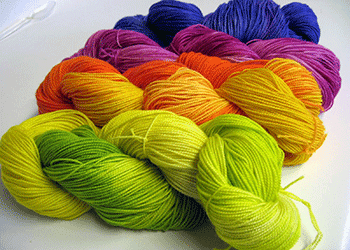 Fabric spreading is so much important part of a garments
industry to cut the fabric and sewing properly and proper shape. After spread
the fabric, it’s ready to cut and make them desire look. Without spreading
fabric not possible cut so many pieces of cloth at a time which way is
important in garments industry.
Fabric spreading is so much important part of a garments
industry to cut the fabric and sewing properly and proper shape. After spread
the fabric, it’s ready to cut and make them desire look. Without spreading
fabric not possible cut so many pieces of cloth at a time which way is
important in garments industry.
Basically most of the fabric are import in garments industry
in a few different package and roll shape. Those fabric roll and package are
unpacking by spreading on the cutting table like lay and make it ply one by
one.
Two types of methods
to makes lay by spreading fabrics.
Manual methods
Fully Hand Process
This method
is working by two people who are working from two different side of spreading
table by hand or spreading fabric on the table by crossing a rod in to the tube
in the center of roll of fabric. This spreading process a little slow and not
so much finished and quality full.
Hand process with hook
This method
also a part of manual process called hand process with hook because this
process is a little different from hand process with a little extra material
called hook. Which is made from iron and this tool looks like an English
alphabet “J”. This method has a little advantage than hand process.
Hand process with spreading track
Spreading
track is a special tool for hand process. Tracks carry the roll of fabric and spread
on the spreading table by changing this position from front to the end of the
spreading table. This method is working by two people who are working from two
different side of spreading table by handling the track tools and spread the
fabric on the table. The basic three condition of making a lay of fabric are
not include in following manual methods.
Mechanical methods
Semi Automatic
Semi
automatic machine is working almost similar to Hand process with spreading
track process because this methods working technique and working prouder are
same but this process are working by electric motor. A roll of fabric are
installed in the machine like Hand process with spreading track and this roll
are spreading on spreading table automatically. The spreading machine are
running on the spreading table by from one side too another side by electrical
and mechanical power.
The advantage of semi automatic machine
The machine has the ability automatically count the ply of
fabric.
After cut the fabric the machine has the ability to catch
the edge of fabric.
This machine has a special tool called inspection light
which is check ant kind of fault in fabric.
To salvage alignment this machine has a photoelectric guide.
The machine has the ability automatically cut the ply of
fabric.
The opening up
of fabric from roll is positive & there is a regulator to adjustment the
spreading and opening up fabric speed.
The facility to maintain the tension of fabric is including
in this machine.
To make the surface plain has a toll are called leveling
blade.
A
platform is installed with the head of the machine for operator to seat and
operate the machine.
This
machine can spread three miter of fabric and this machine can carry from 80 KGs
to 675 KGs.
This
machine can spread 100 miter fabrics per minute.
25 CM lay can be makes by this machine.
When the spreading head moving without spreading any fabrics
then it is can move a little faster than ever.
Fully
automatic machine is upgrade version of Semi Automatic. This machine has the all
of quality which is included in Semi Automatic. Full automatic machine has some
special feature are makes it more special. Fully automatic machine is
maintained by robot and micro processors. The additional advantage of fully
automatic machine are given blew.
This machine can be
directed or fixes how many ply have to spread before start spreading.
This machine is working by robotic technique so if the
fabric roll gone empty then this machine get another new roll automatically
without any human power and start again spread where it was ended.
There is a sensor in front of head. This sensor marks the
fault area of any fabric and automatically cut the fabric withy and stat again
spreading.
Every type of fabric is able to spread and its can makes
every type of lay.
This is automatic spreading machine so its can work so many
faster then others spreading methods.
The Original article was posted in Textile Student Blog http://www.TextileStudent.com






